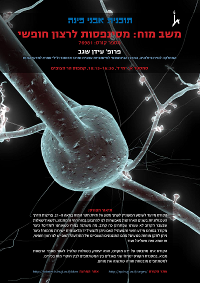

 Home Home The Team The Team Publications Publications Collaborations Collaborations Media Media Video & Pictures Video & Pictures Courses Courses News News Positions Positions |
Courses |
Simulation NeuroscienceAbout this courseSimulation Neuroscience is an emerging approach to integrate the knowledge dispersed throughout the field of neuroscience. The aim is to build a unified empirical picture of the brain, to study the biological mechanisms of brain function, behaviour and disease. This is achieved by integrating diverse data sources across the various scales of experimental neuroscience, from molecular to clinical, into computer simulations. This is a unique, massive open online course taught by a multi-disciplinary team of world-renowned scientists. In this first course, you will gain the knowledge and skills needed to create simulations of biological neurons and synapses. This course is part of a series of three courses, where you will learn to use state-of-the-art modeling tools of the HBP Brain Simulation Platform to simulate neurons, build neural networks, and perform your own simulation experiments. We invite you to join us and share in our passion to reconstruct, simulate and understand the brain! What you'll learn
|

Synapses, Neurons and Brains 2013You will become intimately acquainted with the operational principles of neuronal "life-ware" (synapses, neurons and the networks that they form) as well as with recent ideas about how the dynamics of these networks generate the "neuronal code." As an aperitif we will highlight present brain-excitements and for dessert we will discuss the future of brain research About the CourseProbably the greatest challenge of the "21st century of the brain" is to understand how subcellular and cellular neuronal processes give rise to behavior - movement, perception, emotions, memory and creativity. This course will discuss, step-by-step, how modern molecular, optical, electrical, anatomical and theoretical methods have provided fascinating insights into the operation of the elementary building blocks of brains and, most importantly, how neuronal mechanisms underlie memory and learning processes. We will next discuss why computer simulations are so essential for understanding both neuronal "life ware" and the emergence of networks dynamics (e.g., as in the "Blue Brain Project").The course will start by highlighting a few recent brain-excitements, including treating the sick brain via electrical stimulation, recent attempts at "reading the brain code" for brain-machine interfaces, new neuro-anatomical techniques ("Brainbow" and connectomics) and physiological methods (optogenetics) that enables us to record/activate the living, behaving brain at single cell resolution. We will end by discussing emerging frontiers in brain research, including the interaction between brain research and the arts. As an added bonus, several lectures will be taught by acclaimed neuroscientists who are experts in their respective field.
|
Watch Introduction Video:* You can Enroll for free at the Coursera website, We will be glad if you join us. |
Course Avnei Pina - 76981Hebrew details |

|

